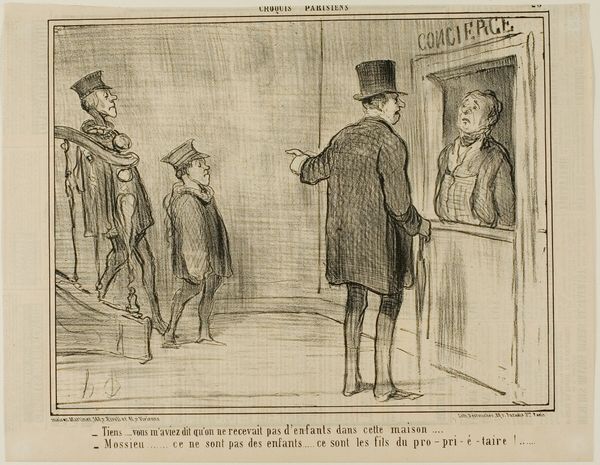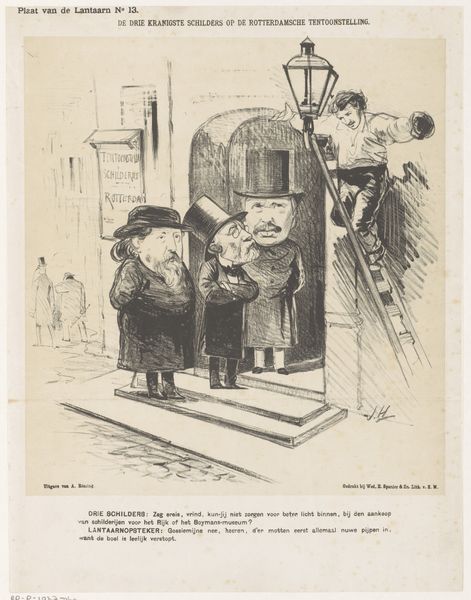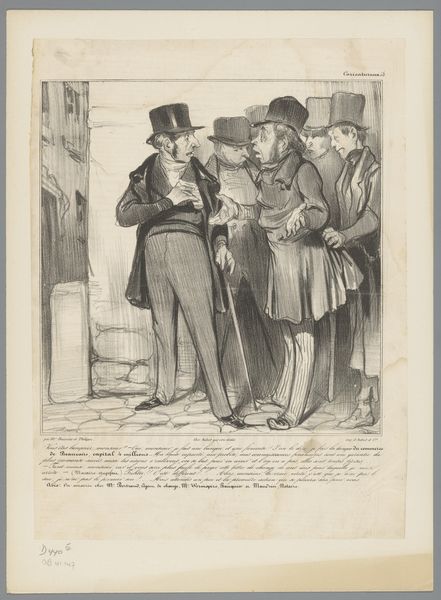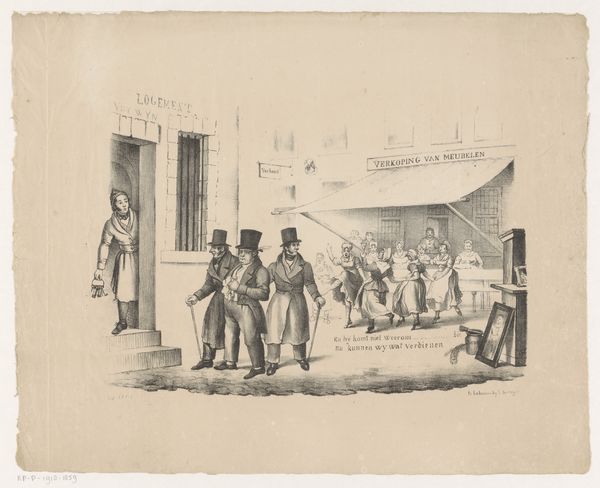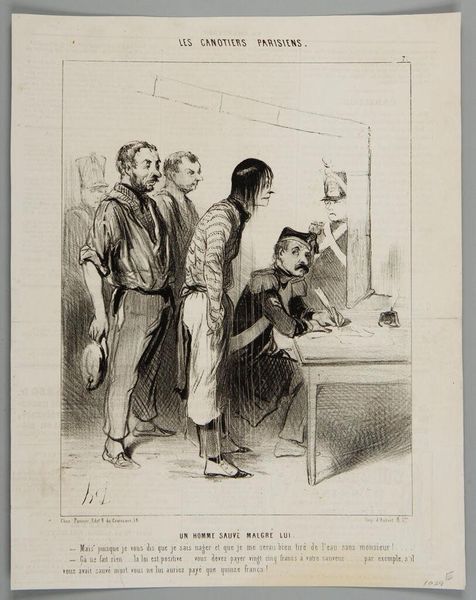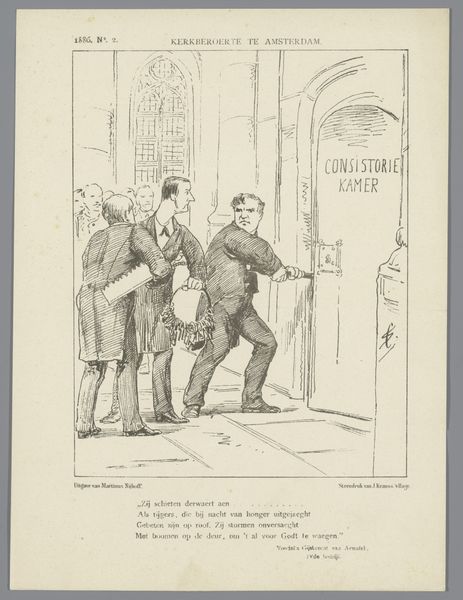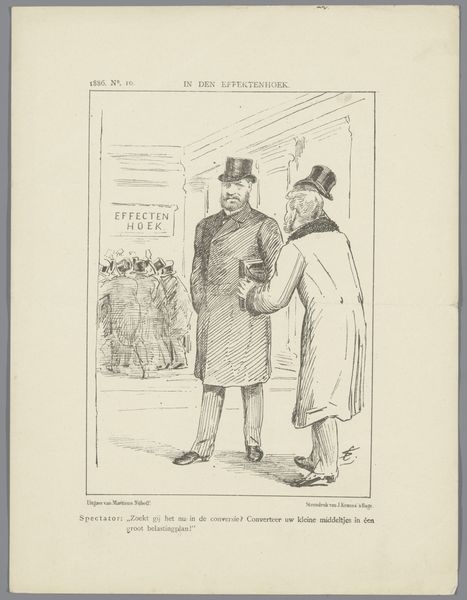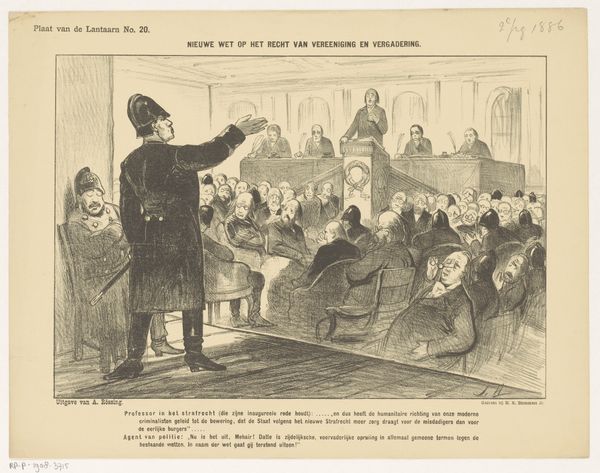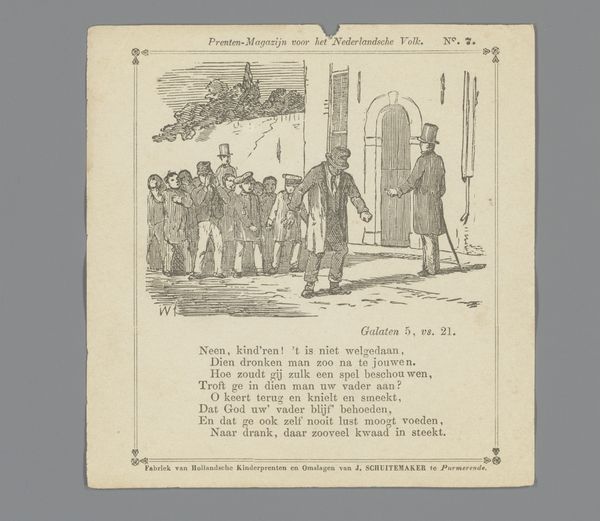
print, engraving
# print
#
engraving
Dimensions: height 256 mm, width 338 mm
Copyright: Rijks Museum: Open Domain
Curator: This print, created in 1886 by Jan Holswilder, is entitled “Spotprent over de Doleantie van 1886”. It’s an engraving. Editor: My first impression is how effectively Holswilder has captured a feeling of captivity and strained hope. The figures, either imprisoned or oppressed, stare expectantly as some better dressed citizens are walking past. Curator: Precisely! It is a representation of the Doleantie, a significant moment of church reformation in the Netherlands. Holswilder really uses his figures and architecture in this prison setting as powerful metaphors for the repression experienced by those who dissented from the established church. The prison embodies both the real and perceived limitations of the religious status quo. Editor: And I appreciate that feeling that it's up to those who still walk free to bring about the changes needed in the religious lives of all Netherlanders. Tell me about the body language used for the prisoners versus the well-off, in what could be their top hats? Curator: The prisoners appear uniform, each looking up expectantly; shackled but spiritually yearning. Whereas the visiting figures are diverse, and self-assured, even haughty. Some seem deeply contemplative, suggesting deliberation or evaluation of the circumstances. The positioning of figures emphasizes this division; between observers and observed, free and captive. Editor: You make it hard to tell, even for those visitors who could have been their sympathizers. The choice to render this scene as a prison adds a very dark layer and intensifies that sense of injustice that resonates still today. It’s about being imprisoned for speaking your truth, it hits a nerve! Curator: The print succeeded, perhaps in amplifying sentiments within a particular segment of society during a pivotal period of religious reformation in the Netherlands, especially among those sympathetic to the Doleantie movement. Editor: It speaks volumes about the importance of visual art as a means of historical documentation and, even better, resistance! Curator: Agreed. Its ability to condense complex political situations into readily comprehensible imagery is really why engravings, prints, and caricatures were often incredibly impactful tools during social conflicts. Editor: Something Holswilder captured, very vividly I might add.
Comments
No comments
Be the first to comment and join the conversation on the ultimate creative platform.
